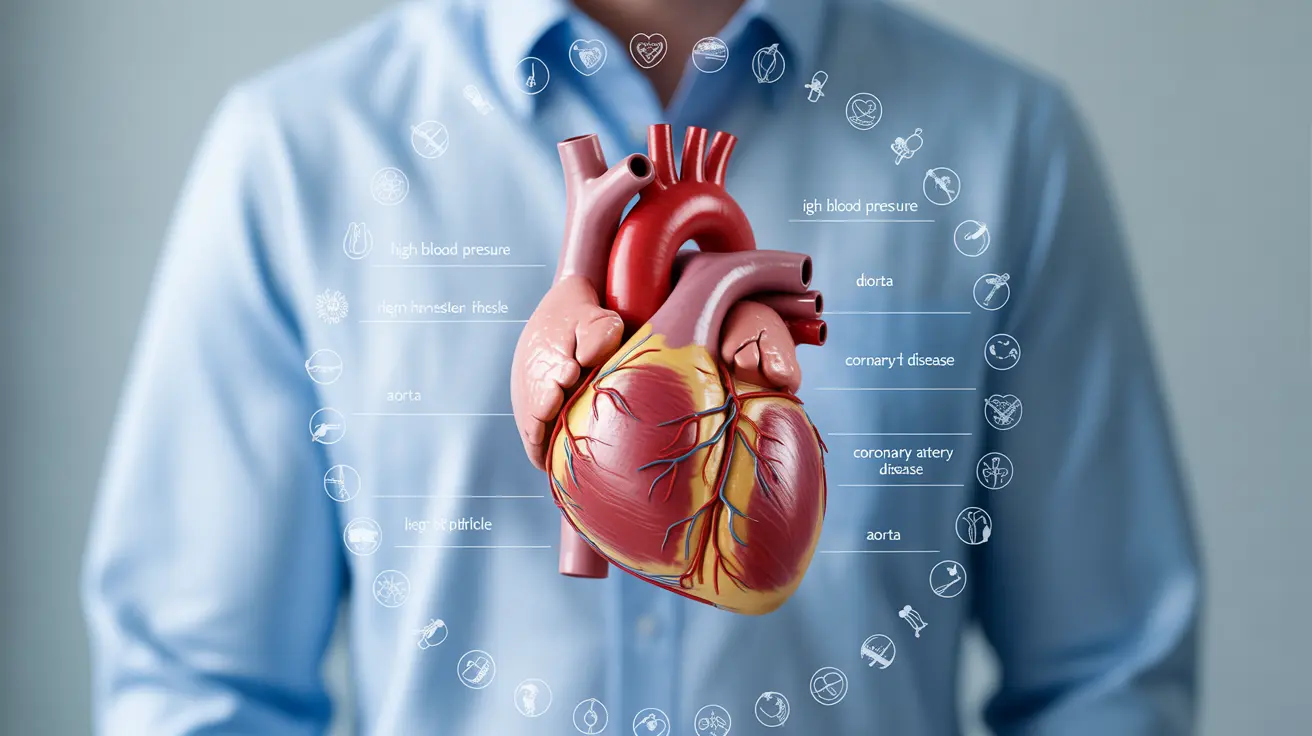Borderline cardiomegaly is a medical condition where the heart is slightly larger than normal but hasn't yet reached the full criteria for cardiomegaly. This condition requires careful monitoring and understanding, as early intervention can help prevent progression to more severe heart enlargement and associated complications.
For individuals diagnosed with borderline cardiomegaly, understanding the causes, recognizing symptoms, and knowing available treatment options is crucial for managing the condition effectively. Let's explore this cardiac condition in detail to help you make informed decisions about your heart health.
Understanding Borderline Cardiomegaly and Its Causes
Borderline cardiomegaly can develop due to various underlying conditions and lifestyle factors. Common causes include:
- High blood pressure (hypertension)
- Coronary artery disease
- Heart valve disorders
- Pregnancy-related heart changes
- Chronic anemia
- Sleep apnea
- Athletic training (athlete's heart)
Risk factors that may contribute to developing borderline cardiomegaly include obesity, family history of heart conditions, excessive alcohol consumption, and certain medical conditions affecting heart function.
Recognizing the Signs and Symptoms
Borderline cardiomegaly may not always present obvious symptoms, especially in its early stages. However, some individuals might experience:
- Mild shortness of breath, particularly during physical activity
- Slight fatigue or decreased exercise tolerance
- Occasional heart palpitations
- Mild swelling in the legs or ankles
- Persistent coughing
It's important to note that these symptoms can be subtle and easily overlooked. Regular medical check-ups can help detect borderline cardiomegaly before symptoms become more pronounced.
Diagnostic Procedures and Tests
Healthcare providers use several methods to diagnose borderline cardiomegaly:
Imaging Tests
- Chest X-rays to visualize heart size
- Echocardiogram for detailed heart structure assessment
- CT scan or MRI for comprehensive cardiac imaging
Additional Diagnostic Tools
- Electrocardiogram (ECG) to evaluate heart rhythm
- Blood tests to check for underlying conditions
- Exercise stress tests to assess heart function during activity
Treatment Approaches and Management
Treatment for borderline cardiomegaly typically focuses on addressing underlying causes and preventing progression. Common approaches include:
Medical Management
- Blood pressure medications if hypertension is present
- Heart rhythm medications when necessary
- Treatment of underlying conditions
Lifestyle Modifications
- Regular moderate exercise as approved by healthcare providers
- Balanced, heart-healthy diet
- Sodium restriction when recommended
- Stress management techniques
Prevention and Long-term Management
Preventing progression of borderline cardiomegaly involves maintaining heart health through various lifestyle measures:
- Regular cardiovascular exercise
- Maintaining a healthy weight
- Limiting alcohol consumption
- Following a heart-healthy diet
- Managing stress effectively
- Regular medical monitoring
Frequently Asked Questions
What causes borderline cardiomegaly and how can I identify the risk factors?
Borderline cardiomegaly is typically caused by conditions like hypertension, coronary artery disease, and valve disorders. Risk factors include obesity, family history of heart disease, excessive alcohol use, and certain medical conditions that affect heart function.
What symptoms should I watch for if I have borderline cardiomegaly?
Key symptoms include mild shortness of breath during activity, slight fatigue, occasional heart palpitations, and minimal swelling in the legs or ankles. However, symptoms may be subtle or absent in early stages.
How is borderline cardiomegaly diagnosed through medical tests?
Diagnosis typically involves chest X-rays, echocardiograms, and sometimes CT scans or MRIs. Additional tests may include ECGs, blood work, and exercise stress tests to evaluate heart function.
What treatment options are available for managing borderline cardiomegaly?
Treatment options include medications to manage underlying conditions, lifestyle modifications, regular exercise, and dietary changes. The specific approach depends on the underlying cause and severity of the condition.
Can lifestyle changes help prevent or improve borderline cardiomegaly?
Yes, lifestyle changes can significantly impact borderline cardiomegaly. Regular exercise, maintaining a healthy weight, following a heart-healthy diet, limiting alcohol, and managing stress can help prevent progression and improve heart health.




